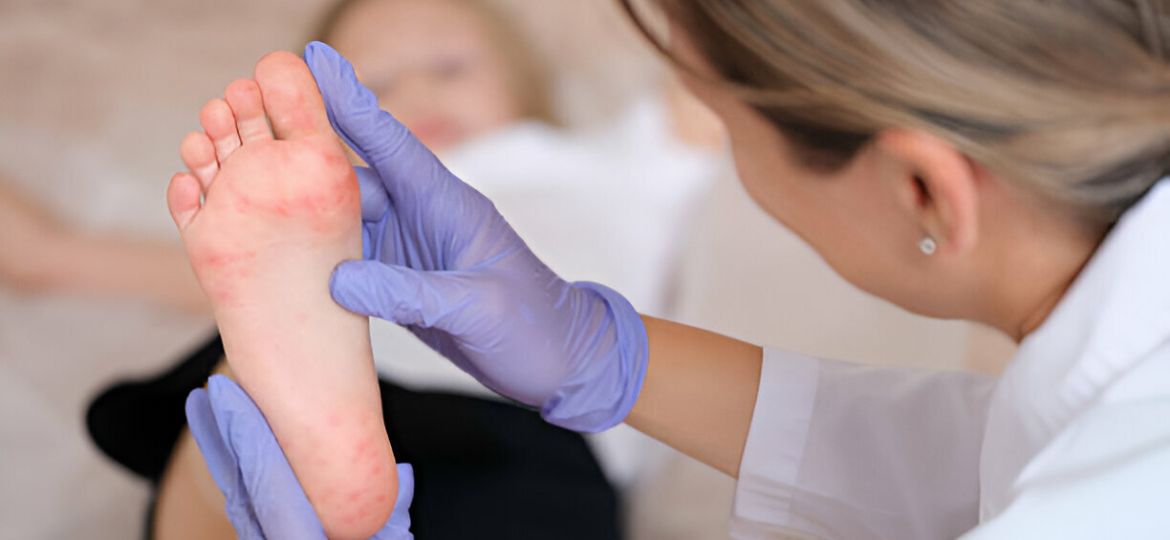

As parents, we keep a close eye on our children’s development, from speech milestones to posture and balance. But when it comes to foot health, it’s easy to overlook signs that something might be amiss. Children’s feet are constantly growing and changing, and early detection of any podiatry issue can prevent long-term problems.
Healthy feet are crucial for your child’s mobility, confidence, and long-term musculoskeletal health. Understanding children’s foot problems and knowing when to see a podiatrist can make a big difference in their comfort and development.
This comprehensive guide looks into some common foot issues in kids, standard warning signs, and pediatric podiatry tips for parents to ensure healthy feet for their little ones.
1. Common Children's Foot Problems
1. Flat Feet (Pes Planus)
Flat feet are quite normal in toddlers as the arches develop gradually. However, if your child experiences pain, fatigue, or difficulty walking, flat feet could be more than just a developmental phase. In such cases, a podiatric assessment may be necessary to determine whether orthotics or strengthening exercises can provide relief.
2. Toe-Walking
Active children aged 8 to 14 are particularly susceptible to Sever’s disease, a common cause of heel pain linked to growth spurts. Symptoms include limping and pain during or after sports. Rest, supportive footwear, and possibly orthotics can aid in recovery. Early treatment also helps in preventing foot problems in children down the line.
3. Heel Pain (Sever’s Disease)
Active children aged 8 to 14 are particularly susceptible to Sever’s disease, a common cause of heel pain linked to growth spurts. Symptoms include limping and pain during or after sports. Rest, supportive footwear, and possibly orthotics can aid in recovery. Early treatment also helps in preventing foot problems in children down the line.
4. In-Toeing and Out-Toeing
It’s not unusual for children to walk with their toes pointing inwards (in-toeing) or outwards (out-toeing) during early development. While often self-correcting, if these patterns persist or worsen, a podiatrist can evaluate whether intervention is necessary to improve gait and coordination.
5. Ingrown Toenails
Ingrown toenails are uncomfortable and can lead to infections if untreated. Improper nail trimming, tight footwear, or genetic predispositions can contribute. Parents should watch for signs of redness, swelling, or pus. If conservative care doesn’t resolve it, seeking podiatric help is wise.
6. Plantar Warts
Plantar warts are caused by the human papillomavirus (HPV) and often spread in communal areas, such as school showers or swimming pools. They may appear as small, rough bumps on the soles of the feet and can be painful. Treatment can range from topical therapies to cryotherapy, depending on severity.
7.Ankle Sprains and Growth Plate Injuries
Falls and twists are part of growing up, but not all injuries are equal. A simple sprain might actually be a growth plate injury, which, if left untreated, could affect bone development. Prompt diagnosis and rehabilitation from a podiatrist are crucial for proper healing.
Warning Signs: When to Consult a Podiatrist
Wondering, “Should I take my child to a podiatrist?” These are the red flags to keep an eye out for:
- Persistent pain that doesn’t improve with rest.
- Visible deformities (e.g., bunions, curled toes).
- Changes in walking patterns (limping, toe-walking, or frequent tripping).
- Reluctance to participate in usual activities due to foot discomfort.
Early intervention can prevent complications, so don’t hesitate to seek professional advice.
The Role of Pediatric Podiatrists
Child podiatrists are specially trained to assess, diagnose, and treat a wide range of children’s foot problems. During a consultation, they’ll evaluate your child’s posture, gait, joint mobility, and footwear habits.
Treatment options may include:
- Custom orthotics for arch support or alignment correction
- Stretching and strengthening exercises
- Footwear advice
- Minor procedures for issues like ingrown toenails or warts
Pediatric podiatrists use child-friendly approaches to ensure comfort and effective treatment. They may also collaborate with paediatricians and physiotherapists to provide holistic care.
Preventive Measures for Healthy Foot Development
A few proactive steps can go a long way in preventing foot problems in children:
- Footwear matters: Choose supportive shoes with a firm heel counter and good arch support, especially for school and sports.
- Hygiene is key: Encourage daily washing, drying between the toes, and proper toenail trimming.
- Stay active, but careful: While exercise is great for development, teach your child to warm up, stretch, and listen to their body.
- Routine checks: Regular visits to a child podiatrist, even for minor concerns, help catch potential issues early.
Conclusion
Children’s feet go through rapid changes during their early years. While many issues get resolved on their own, some require expert intervention to prevent lasting impacts. By recognising common foot issues in kids and knowing when to see a podiatrist, you can ensure your children’s feet remain healthy and pain-free.
At Poet’s Corner Medical Centre, families have access to a skilled child podiatrist. If you notice persistent foot pain or any irregularities, don’t hesitate to reach out to us. Call 02 9698 3060 to book an appointment.



